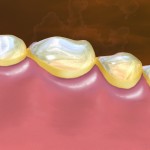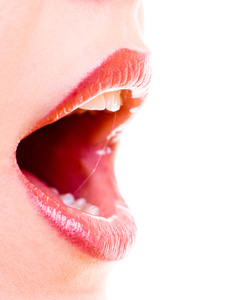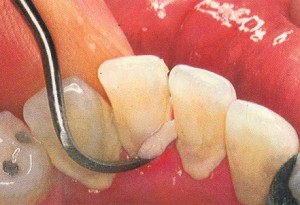Saliva is a complex fluid found in the mouth consisting of a mixture of secretions from the major salivary glands and the minor glands of the tissues in the mouth. Majority of saliva is produced by the three pairs of major glands – the parotid, submandibular, and sublingual glands. The rest of it is produced by thousands of minor salivary glands distributed throughout the mouth and throat. Continue reading
Tag Archives: plaque
How Does Plaque Affect the Teeth?
What is dental plaque?
Dental plaque is a biofilm (consists of bacteria, saliva )Â which is found on tooth surface. It is normally pale yellow in color and initially can be scraped/removed by tooth brushing and flossing. Continue reading
Laser Dental Cleaning
Lasers have been used in dentistry since 1994 to treat a number of dental problems. But, despite FDA approval, no laser system has received the American Dental Association’s (ADA) Seal of Acceptance. That seal assures dentists that the product or device meets ADA standards of safety and efficacy, among other things. The ADA, however, states that it is cautiously optimistic about the role of laser technology in the field of dentistry. These lasers are different from the cold lasers used in phototherapy for the relief of headaches, pain, and inflammation. Continue reading
Your Guide To Preventing Cavities
Cavities in teeth or tooth decay, also known as dental caries to the dental community, is a process that may take place on any tooth surface in the mouth where dental plaque is allowed to develop over a period of time.
Cavities will not only cause you pain in your mouth but also a hole in your wallet if you let the decay progress further as a more extensive dental treatment would be required to treat something that could have been prevented earlier on. Continue reading
What Can You Use to Whiten Dentures?
When a denture is fabricated, the patient is asked to choose the shade of the teeth along with the dentist at the chair side. The patient would be given a face mirror to hold, and different variety of shades of teeth can be held up for the patient to see through the reflection of the mirror. The shade the approximated the adjacent tooth most should be chosen, and not the most desired shade by the patient. Therefore, choosing the shade of the teeth of the denture is always a delicate balance between what the dentist thinks is suitable, and what the patient wants. Continue reading
What Is the Function of a Toothbrush?
A toothbrush is a tool that is used to clean the teeth and to maintain our oral hygiene. Tooth brushing is one of the ways to control plaque level in our mouth , which is mechanically. It can also be done chemically, but mechanical cleaning is the most commonly practiced method around the world. It is also the most fundamental way of removing all the debris in our mouth, in which cannot be done by just using the chemical cleaning method alone. Continue reading
Top 5 Early Signs of Gingivitis

Picture 1: healthy gingiva which is pink, firm, and have knife edges at the neck of the teeth, with mild plaque accumulation
Gingivitis is more commonly known as the inflammation of the gums. The gums are also clinically known as gingiva, hence the term gingivitis. Generally, healthy gums are pink in colour, firm, and do not bleed while brushing. However, it is almost impossible to maintain perfectly healthy gums as gingivitis it is caused by plaque (a thin biofilm of bacteria) that is adhering to our teeth. Plaque can be removed through brushing, but, they are formed again once the brushing stops.  Usually, there is no need to worry about our gum’s health as long as a good brushing regimen is maintained (which is twice daily), however, it does have the potential to evolve into something more destructive, which is known as periodontitis. Continue reading
How to avoid scaling and root planing scam
Scaling? Root planing ? These are everyday dental terms which sort of sound like something used in the field of engineering or construction. To a certain extent, there seems to be a muddle up of understanding about these two terms, what they are, and why they are even needed. This article aims to clear up the air of confusion.
Like nearly all dental problems it all originates from plaque. Plaque is a soft sticky bio-film formed by bacteria which is rather easily cleaned through the use thorough and proper tooth brushing habits. However, should plaque be allowed to build up (due to improper tooth brushing technique or total neglect of oral hygiene.) it may take up trace minerals in ordinary salivary and harden to form what is known as dental calculus, a tenacious solid mass which is nearly impossible to remove through tooth brushing. Without removal of these substances, you are opening the door to gum infection, tooth loss and even serious internal diseases.


